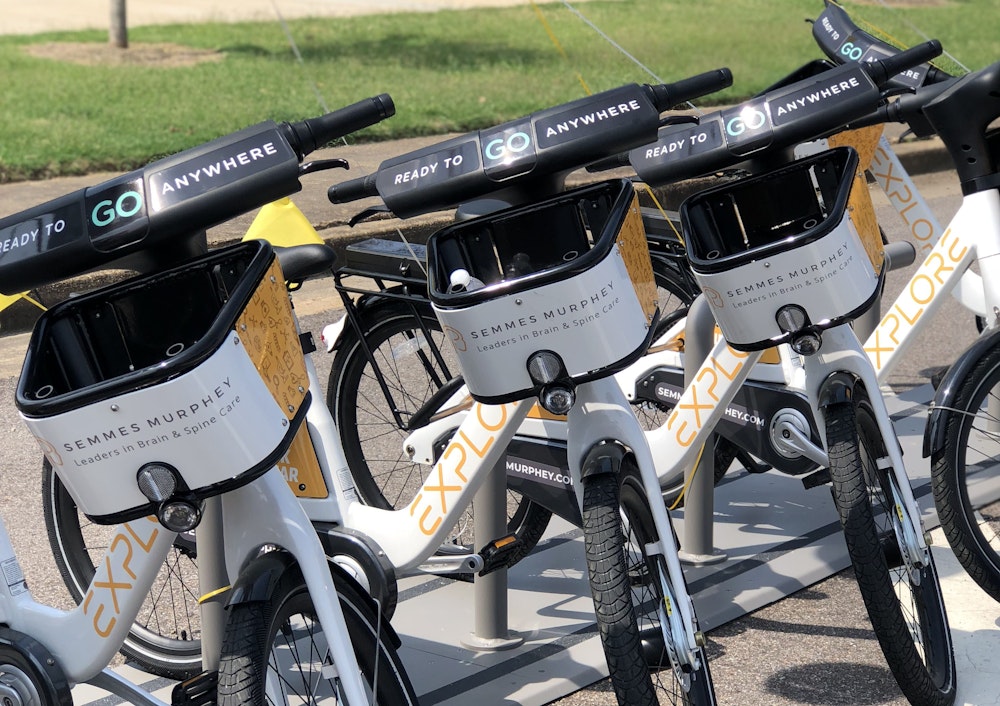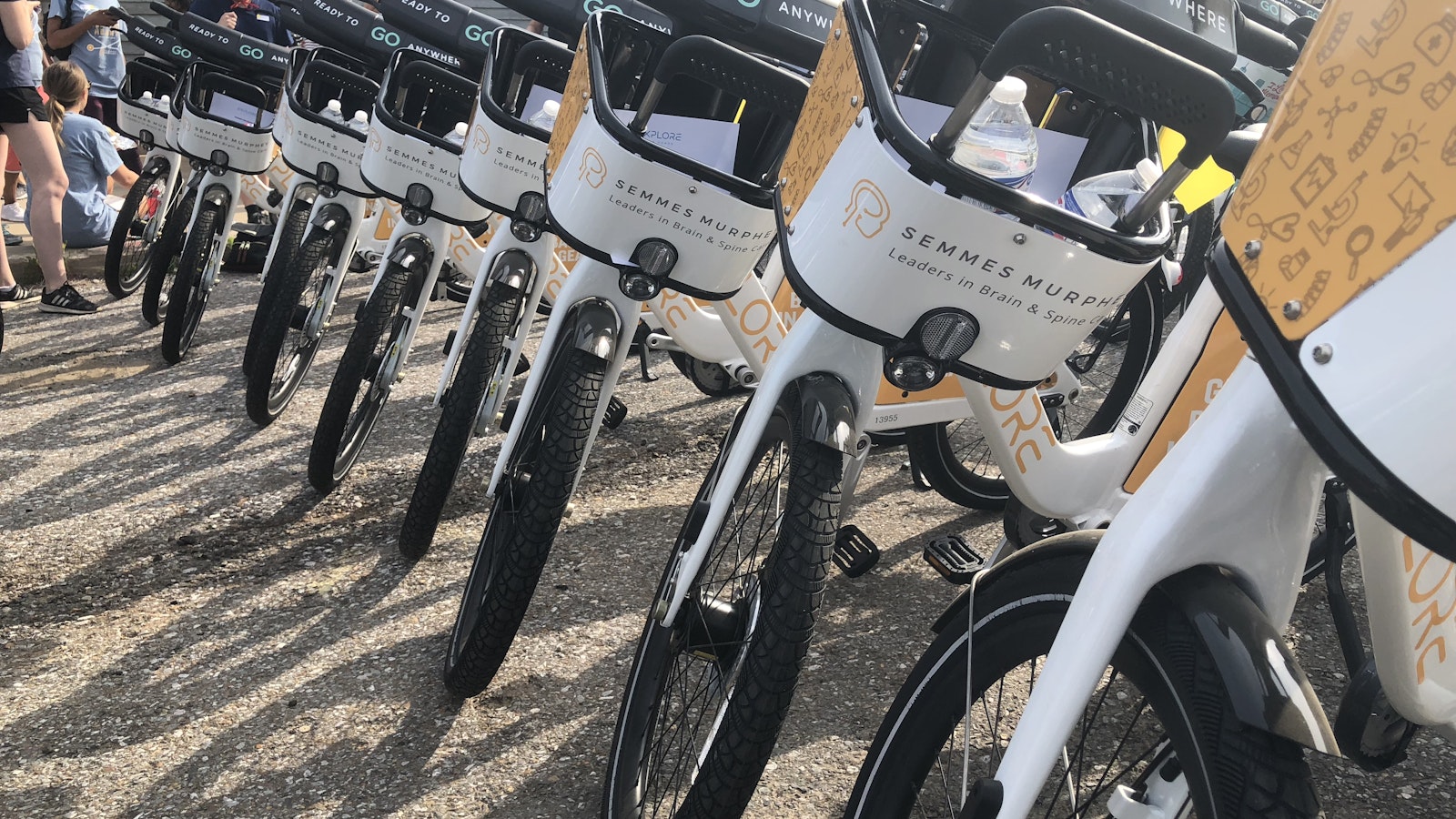Articles
May 3, 2019
Bike Safety from Our Physical Therapists
May is National Bike Month and we are excited to continue our partnership with Explore Bike Share!
We encourage you to get out and ride and explore our city but before you do, take these bike safety tips provided by a few of Semmes Murphey's physical therapists.
Benefits of Cycling
Cycling helps increase your body’s stamina and gives a boost to the endurance capacity of a person. Energy levels get higher, resulting in enthusiasm at work and generally higher energy for all normal activities. It opens options for other kinds of exercises and fitness activities.
Cycling is an excellent exercise for burning calories. A person cycling with a speed of 10 mph burns approximately 300 calories in an hour. Cycling strengthens the muscles in the core, thighs, buttocks, and arms. Regularly working these muscles helps improve your body’s composition.
Other than the physical health benefits, there are social and mental health benefits that make cycling an enjoyable activity as well. Research has shown that participating in any kind of sport can reduce stress, but in some cases, playing sports might not be possible. Instead, one can spend time riding a bicycle, which is also equally beneficial in reducing stress and depression. Cycling has been shown to help with pain management. It is considered as a “releasing” exercise. Releasing exercises play a very important role in alleviating physiological and psychological issues like stress, tension, and pain. Cycling is a widely accepted pain-reduction strategy.
"It is important to vary your hand and body position frequently. This changes the angle of your back, hips, neck and arms, so that different muscles and joints are stressed . Keep your arms relaxed and don’t lock your elbows. This will help you absorb bumps better." Ben Graves, PT
Injury Prevention
Cyclists can help prevent overuse injuries by:
- Having their bike fit appropriately for their body
- Maintaining a pedal cadence of 88–95 rpm (revolutions per minute) or higher
- Maximizing pedal stroke to optimize the muscular balance
- Using a clipless pedal position that mimics the alignment of the foot when it is dangling off of a table when in a sitting position
- Maintaining hip and low back strength and flexibility
"Always wear a helmet EVERY time you ride a bike to protect your head. One fall could result in a head injury." Kathryn Berry, PT

Common Causes of Knee Pain in Cyclists
Medial pain is located on the inside of the knee due to friction between the knee cap and thigh bone. This pain may be associated with riding with a seat that is too low or having a pedaling cadence that is too slow. Decreased hip flexibility can also be associated with inner knee pain.
Lateral pain is located on the outside of the knee and be due to the friction of the Iliotibial band over the fat pad or bone of the femur. This pain may be associated with inappropriate cleat and pedal position, the inappropriate position of the bike seat, leg length discrepancy and/or improper ankle position while riding.
Anterior pain is located directly in front of the knee due to excessive compression forces between the knee cap and thigh bone. This pain may be associated with a seat that is too low, too far forward and/or riding with a low pedal cadence
"Bicyclists should follow the rules of the road which includes yielding to pedestrians." Caroline Daniel
